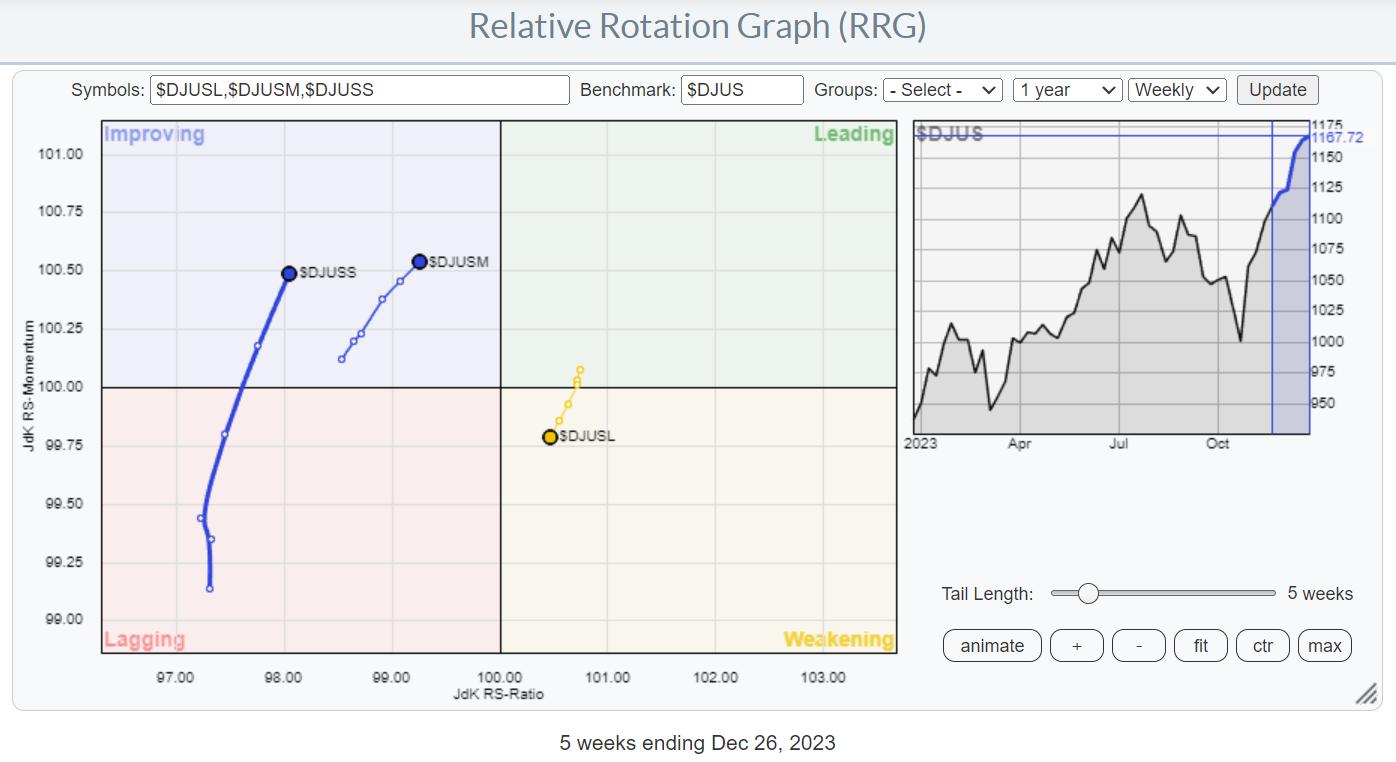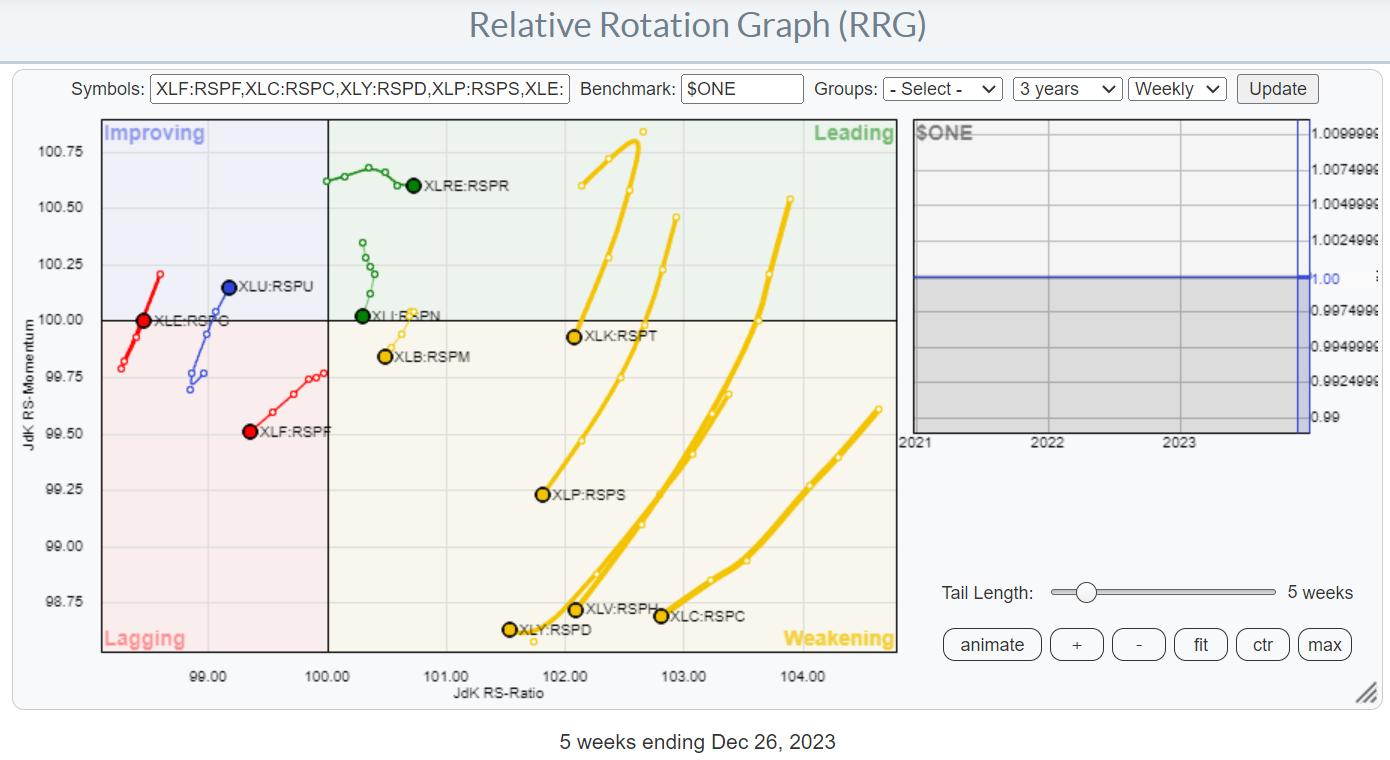TAKEAWAYS
- Money rotating away from large-cap stocks
- Re-distribution and new inflow to mid- and small-caps
- Majority of sectors show preference for equal weight ETFs over Cap-Weighted counterparts

I have used this Relative Rotation Graph regularly in the past few weeks to indicate the ongoing rotation out of large-cap stocks into the mid-and small-cap segments.
This is happening while the market as a whole, in this case, the Dow Jones US index ($DJUS), continued to move higher.
What this means is that investors are pulling money out of large-cap stocks and re-distributing it to the mid- and small-cap segments. While also adding fresh money into the market (otherwise, we would not be going higher).
In this last written RRG article for this year, I'd like to review a Relative Rotation Graph that I introduced in Sector Spotlight a few weeks ago.
Sector Spotlight 11/7/23
This particular RRG uses ratio symbols to visualize the difference in rotation between cap-weighted and equal-weighted sectors.

You may need a few seconds to adjust and understand what we are looking at here.
The 11 tails each represent the comparison between the cap-weighted sector divided by the equal-weight sector. So for technology, that is XLK:RSPT.
When that ratio moves higher, cw is outperforming ew and vice versa. So, we are interested in the absolute direction of that tail. Therefore, we use $ONE as the benchmark.
*When you are a StockCharts.com subscriber, clicking on the image will take you to this RRG, which you can then save as a bookmark in your browser for later retrieval
Now, look at that RRG again.
What immediately stands out, at least to me and I hope to you as well, is the large group of tails inside the weakening quadrant and heading towards lagging. We can include XLI:RSPN in that group as well, as it is close to crossing into weakening and also traveling at a negative heading. XLF:RSPF is already well inside the lagging quadrant and heading deeper into it at a negative heading.
For all these sectors :
- Financials
- Industrials
- Materials
- Technology
- Consumer Staples
- Consumer Discretionary
- Health Care
- Communication Services
the conclusion is that the equal-weight versions should be preferred over their cap-weighted counterparts.
That leaves only three sectors where the cap-weighted version has a better outlook for the coming weeks. These are
- Real-Estate inside the leading quadrant
- Utilities inside the improving quadrant
- Energy moving back from lagging to improving
It is a clear rotation away from cap-weighted, i.e., large-cap names, to the second and maybe third-tier market capitalizations at the start of the new year.
I am going to leave you to think about this observation. I wish you a very happy New Year, and I am looking forward to seeing you back in 2024 with more written RRG blog articles and Sector Spotlight videos.
Thank you for 2023, --Julius.
Julius de Kempenaer
Senior Technical Analyst, StockCharts.com
Creator, Relative Rotation Graphs
Founder, RRG Research
Host of: Sector Spotlight
Please find my handles for social media channels under the Bio below.
Feedback, comments or questions are welcome at Juliusdk@stockcharts.com. I cannot promise to respond to each and every message, but I will certainly read them and, where reasonably possible, use the feedback and comments or answer questions.
To discuss RRG with me on S.C.A.N., tag me using the handle Julius_RRG.
RRG, Relative Rotation Graphs, JdK RS-Ratio, and JdK RS-Momentum are registered trademarks of RRG Research.






